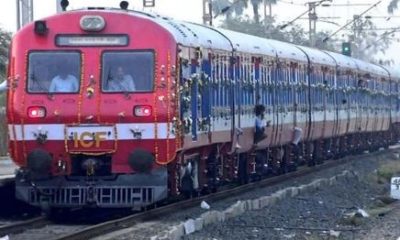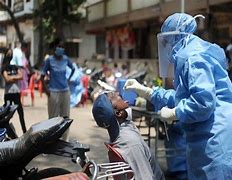Feature
Temples should be freed from state control: Rajasekharan

Thiruvananthapuram: Kerala BJP president Kummanam today stated that temples should be freed from state control and the land that they have lost unlawfully should be given back to them.
“There is freedom for the churches and mosques but not for temples and we are of the firm opinion that temples should be run by devotees in a democratic manner,” Rajasekharan said here in his first interaction with the media after becoming BJP state head on Friday.
He said about 1300 temples were being run by the state-owned Devasom Boards.
“Why is it that boards should run this? It should be left to the devotees as it happens in the remaining 4000 temples in the state, which are run by devotees.”
Rajasekharan (63) noted that politicians were at the helm of affairs at all the major temples that brought in revenue, including Sabarimala and Sree Krishna Temple at Guruvayoor.
Only 30 of the 1300 temples run by boards were in profit, he added.
Rajasekharan also called for an end to the encroachment of land and property of the temples.
“More than 25,000 acres of land of various temples have been lost and we demand that it should be given back to them.”
The appointment of Rajasekharan, a full time RSS pracharak, came as a surprise to many as he had never occupied any political post in the party and was mostly associated with Hindu Aikya Vedi, RSS, or pro-Hindu cultural outfits.
“I see my appointment as a responsibility and with this am entering a new phase. Don’t forget that Deendayal Upadhyaya was president of Jana Sangh. I don’t see any disqualification for me in heading the state BJP,” said Rajasekharan.
He said Kerala politics was set for a great transformation.
“The rival fronts in Kerala (the CPI-M-led Left opposition and the ruling Congress-led UDF) are just one and the same and from now on in Kerala it would be the BJP on one side and all the rest on the other side.”
The two rival political fronts had between them touched new records in corruption and “we will be emphasising on value-based politics,” said Rajasekharan.
His first task would be to select his team and then he would prepare a master plan for Kerala, said Rajasekharan.
Entertainment
Meghalaya Reserves Legalized Gambling and Sports Betting for Tourists

The State Scores Extra High on Gaming-Friendly Industry Index
Meghalaya scored 92.85 out of 100 possible points in a Gaming Industry Index and proved to be India’s most gaming-friendly state following its recent profound legislation changes over the field allowing land-based and online gaming, including games of chance, under a licensing regime.
The index by the UK India Business Council (UKIBC) uses a scale of 0 to 100 to measure the level of legalisation on gambling and betting achieved by a state based on the scores over a set of seven different games – lottery, horse racing, betting on sports, poker, rummy, casino and fantasy sports
Starting from February last year, Meghalaya became the third state in India’s northeast to legalise gambling and betting after Sikkim and Nagaland. After consultations with the UKIBC, the state proceeded with the adoption of the Meghalaya Regulation of Gaming Act, 2021 and the nullification of the Meghalaya Prevention of Gambling Act, 1970. Subsequently in December, the Meghalaya Regulation of Gaming Rules, 2021 were notified and came into force.
All for the Tourists
The move to legalise and license various forms of offline and online betting and gambling in Meghalaya is aimed at boosting tourism and creating jobs, and altogether raising taxation revenues for the northeastern state. At the same time, the opportunities to bet and gamble legally will be reserved only for tourists and visitors.
“We came out with a Gaming Act and subsequently framed the Regulation of Gaming Rules, 2021. The government will accordingly issue licenses to operate games of skill and chance, both online and offline,” said James P. K. Sangma, Meghalaya State Law and Taxation Minister speaking in the capital city of Shillong. “But the legalized gambling and gaming will only be for tourists and not residents of Meghalaya,” he continued.
To be allowed to play, tourists and people visiting the state for work or business purposes will have to prove their non-resident status by presenting appropriate documents, in a process similar to a bank KYC (Know Your Customer) procedure.
Meghalaya Reaches Out to a Vast Market
With 140 millions of people in India estimated to bet regularly on sports, and a total of 370 million desi bettors around prominent sporting events, as per data from one of the latest reports by Esse N Videri, Meghalaya is set to reach out and take a piece of a vast market.
Estimates on the financial value of India’s sports betting market, combined across all types of offline channels and online sports and cricket predictions and betting platforms, speak about amounts between $130 and $150 billion (roughly between ₹9.7 and ₹11.5 lakh crore).
Andhra Pradesh, Telangana and Delhi are shown to deliver the highest number of bettors and Meghalaya can count on substantial tourists flow from their betting circles. The sports betting communities of Karnataka, Maharashtra, Uttar Pradesh and Haryana are also not to be underestimated.
Among the sports, cricket is most popular, registering 68 percent of the total bet count analyzed by Esse N Videri. Football takes second position with 11 percent of the bets, followed by betting on FIFA at 7 percent and on eCricket at 5 percent. The last position in the Top 5 of popular sports for betting in India is taken by tennis with 3 percent of the bet count.
Local Citizens will Still have Their Teer Betting
Meghalaya residents will still be permitted to participate in teer betting over arrow-shooting results. Teer is a traditional method of gambling, somewhat similar to a lottery draw, and held under the rules of the Meghalaya Regulation of the Game of Arrow Shooting and the Sale of Teer Tickets Act, 2018.
Teer includes bettors wagering on the number of arrows that reach the target which is placed about 50 meters away from a team of 20 archers positioned in a semicircle.
The archers shoot volleys of arrows at the target for ten minutes, and players place their bets choosing a number between 0 and 99 trying to guess the last two digits of the number of arrows that successfully pierce the target.
If, for example, the number of hits is 256, anyone who has bet on 56 wins an amount eight times bigger than their wager.























